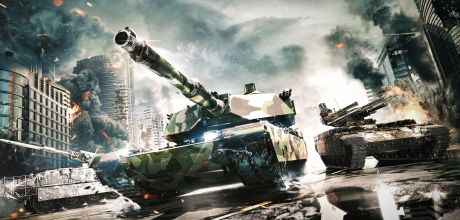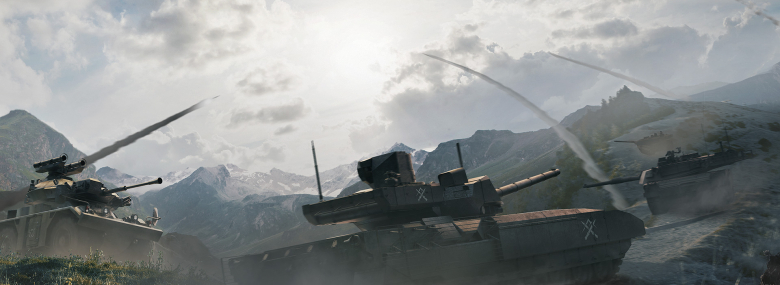
Commanders!
This month in our Branch of the Month series is dedicated to the European Fire Support Armored Fighting Vehicle and Tank Destroyer Branch branch, available in Zhang Feng’s vehicle pool.

The branch consists of mostly Czechoslovak and Polish vehicles with a few Chinese designs thrown in as well and can be divided into two historically distinctive parts – the pre-1989 designs and the post-1989 designs. Let’s talk about the Warsaw Pact era designs first.
When discussing the Warsaw Pact, the citizens of the “free world” usually imagine a monolithic Soviet Union military organization, united in its hatred of jeans, hamburgers and jazz music, that is ready to throw thousands of Russian tanks into the Fulda Gap and flood the entire Europe in a tide of steel and fire. The reality, as if often happens, was far more complex and the Warsaw Pact was far less homogenous than most people think. To understand why, we have to take a look at the European situation before and during the Second World War.
First, you have Poland. Between the two great wars of the 20th century, Poland repelled one Soviet invasion and succumbed only to the combined forces of the Soviets and the Nazis in 1939. The Polish had little reason to love the Russians, especially when they often behaved as bad as the Nazis during the period of their alliance. The relations with their southern neighbor, Czechoslovakia, were strained as well due to several territory disputes going back to the end of the First World War.
Some Polish heavy military industry existed before the war – Poland was making its own guns and infantry weapons but their armored vehicles were either very light or British design copies or, generally speaking, the industry was not of world class quality. The war didn’t help the situation in the slightest. Between the war damage, the looting and the deaths of the Polish elite, Poland was starting after the end of the war from scratch.
Czechoslovakia was another story. Inheriting most of the Austro-Hungarian industrial base after the First World War, it became an industrial powerhouse and a number one arms exporter in the world in the early 1930s. Škoda guns were sold all around the world with the famous Czechoslovak late 1930s light tanks used in many countries, including such exotic ones as Peru.
What Czechoslovakia shared with Poland was the mistrust in its neighbors. In the late 1930s, Germany was openly hostile, Austria and Hungary were its allies (as well as the enemies of old – by that time, Austria-Hungary was still fresh in everyone’s memory) and Poland started to bring up territorial claims once again. Czechoslovakia made a mistake of putting its fate into the hands of its alleged allies – France and Great Britain. Predictably, it was betrayed and sold to Adolf Hitler for “peace” that didn’t last anyway. The entire Czechoslovak industrial base fell to the hands of the Nazis who, ironically, used it to crush Poland, France and everyone else who stood in their way in mainland Europe.
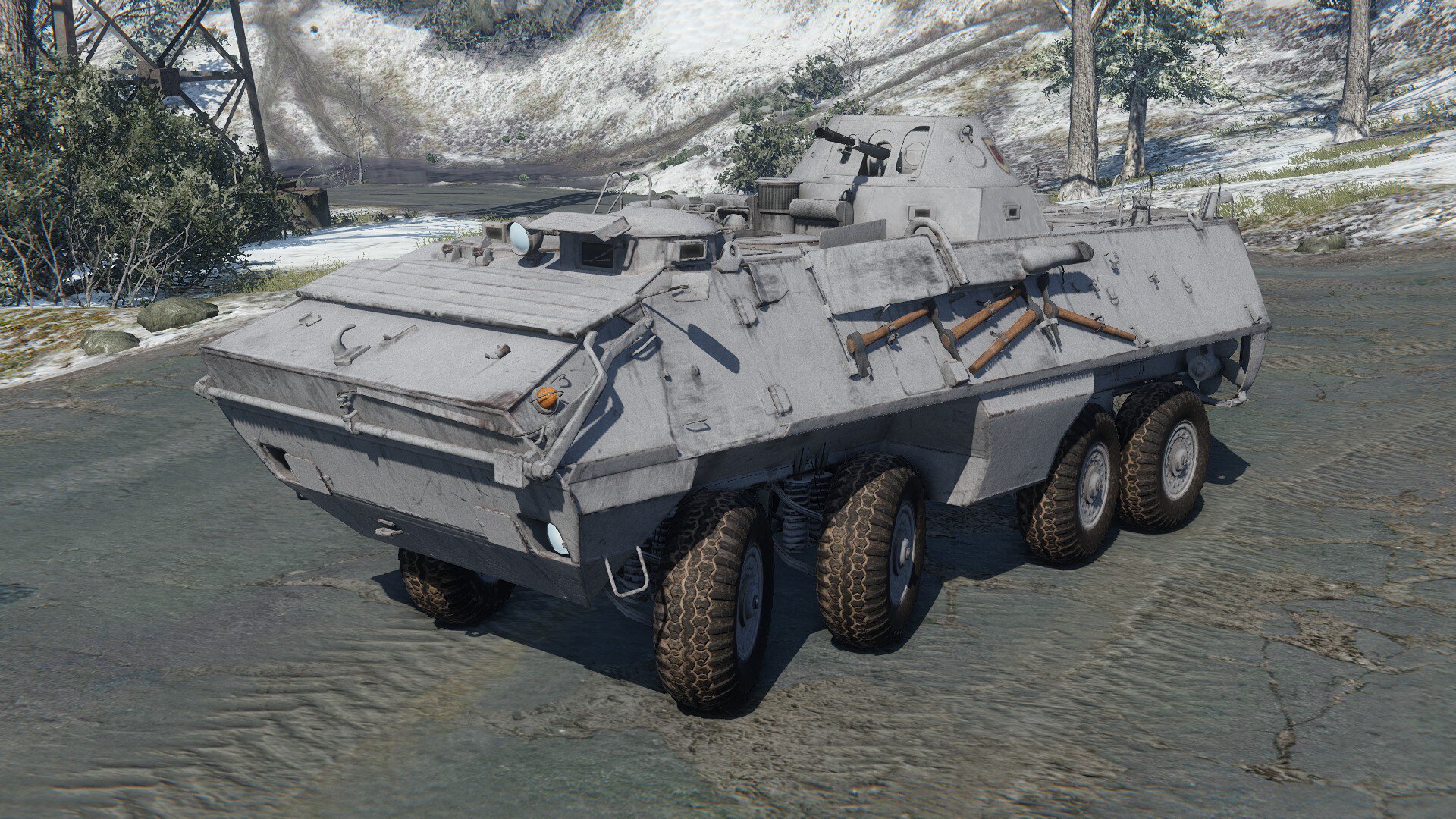
At this point, we skip the events of the war by only noting the massive losses the Soviet Union took and the fact several Polish and Czechoslovak exile units fought as allies against the Nazis under its banner.
Let’s stop here for a moment, in 1945. Close your eyes and try to remember – what did you do five years ago? Perhaps you were at school, or working another job. Perhaps you are thinking of an old flame, a friend you haven’t seen a while, or a myriad of other things. The point is – you likely remember what you did, what you were like five years ago. And so it was for the liberated peoples of Europe in 1945. Sometimes, we look at the Second World War as the great divider – before it, we look at the old world the same way we look at medieval times. After all, the army was riding horses, flying biplanes and the women dressed funny. The world that came after it is more like our own with modern tanks on the battlefield, automatic rifles and jets in the sky. But for people back then, the events of 1939-1940 were very fresh and so was the mistrust. Such were the foundations the four decades of Soviet hegemony were built on.
The primary Soviet motivation behind establishing a series of buffer states governed by brutal communist regimes was, apart from tapping their resources, to prevent any more invasions. To that end, a unified command had to be established (seeing as the Americans had one of their own in the form of the NATO) – the Warsaw Pact was established in 1955 to address that fact.
Another aspect, the way the Soviets saw it, was an economic one as well as the one of efficiency. Even with a unified command structure, you can’t run an effective alliance-wide operation with each army having its own equipment of often inferior quality due to the lack of heavy industry tradition. And, finally, why let your satellite countries produce their own inferior equipment if you can sell them yours and tie them economically even closer to yourself? This way, you can also act as an arbiter in the case of a conflict between the countries in your sphere of influence (and plenty of those happened).
The gear solution was quite simple – equipment unification. Starting from the mid-1950s, Soviet arms and calibers became adopted by all the future Warsaw Pact members and it stayed that way until the collapse of the communist regimes in 1989-1991. To a degree, that is.
It is true that the core of the Warsaw Pact armies’ equipment was Soviet in origin (or locally license-produced) but there were many, many exceptions.
The three most important reasons for these exceptions (that is, the Soviets allowing the use of foreign equipment in the Warsaw Pact armies) were:
- Political reasons (the lack of Soviet control over some of its satellites)
- Equipment shortages
- Soviet unwillingness to supply their allies with cutting edge equipment
Historically, the first reason was the shortages. After the end of the war, the Soviet Union was exhausted, both manpower-wise and equipment-wise. Power had to be consolidated, its own units refitted but there were only many resources to go around. While a portion of its military production was moved to the Ural Mountains in a colossal effort early in the war, a lot of it was lost and the war-torn Soviet Union simply didn’t have the incredible industrial might of the United States’ mainland to produce everything needed on short notice.
Add the default inefficiency and corruption of the central planning economic system and you’ll get a picture of how the Soviet military looked for the 40 years that followed – they had large numbers of solid weapon systems (especially the Soviet tanks were superior to the western ones until the arrival of the Leopard 2 and the Abrams MBTs) and a relatively small number of truly cutting edge stuff, but these were never available in very high numbers and a lot of projects were discontinued due to the lack of funding, especially in the waning days of the Soviet empire.
The Czechoslovak army is a good example of this. The original post-war idea was to re-arm it with the T-34 tanks and a large number of Soviet-built APCs, but there simply weren’t enough around. As a result, the Czechoslovaks made do between 1945 and 1952 with salvaged, refitted and upgraded German equipment (that was later sold off, that’s how a lot of Panzer IV’s and StuG’s found their way to Syria for example), old war-time T-34 models the exile armies were equipped with and, finally, the tanks that came from the western exile units (mostly Cromwell tanks with a few Shermans and Stuarts) until 1951 when a license production of the Soviet T-34/85 was finally started. The Czechoslovaks had a number of interesting post-war projects from the late 1940s (realistic projects, that is) but those were all cancelled from 1950 onwards for the sake of the abovementioned equipment unification.
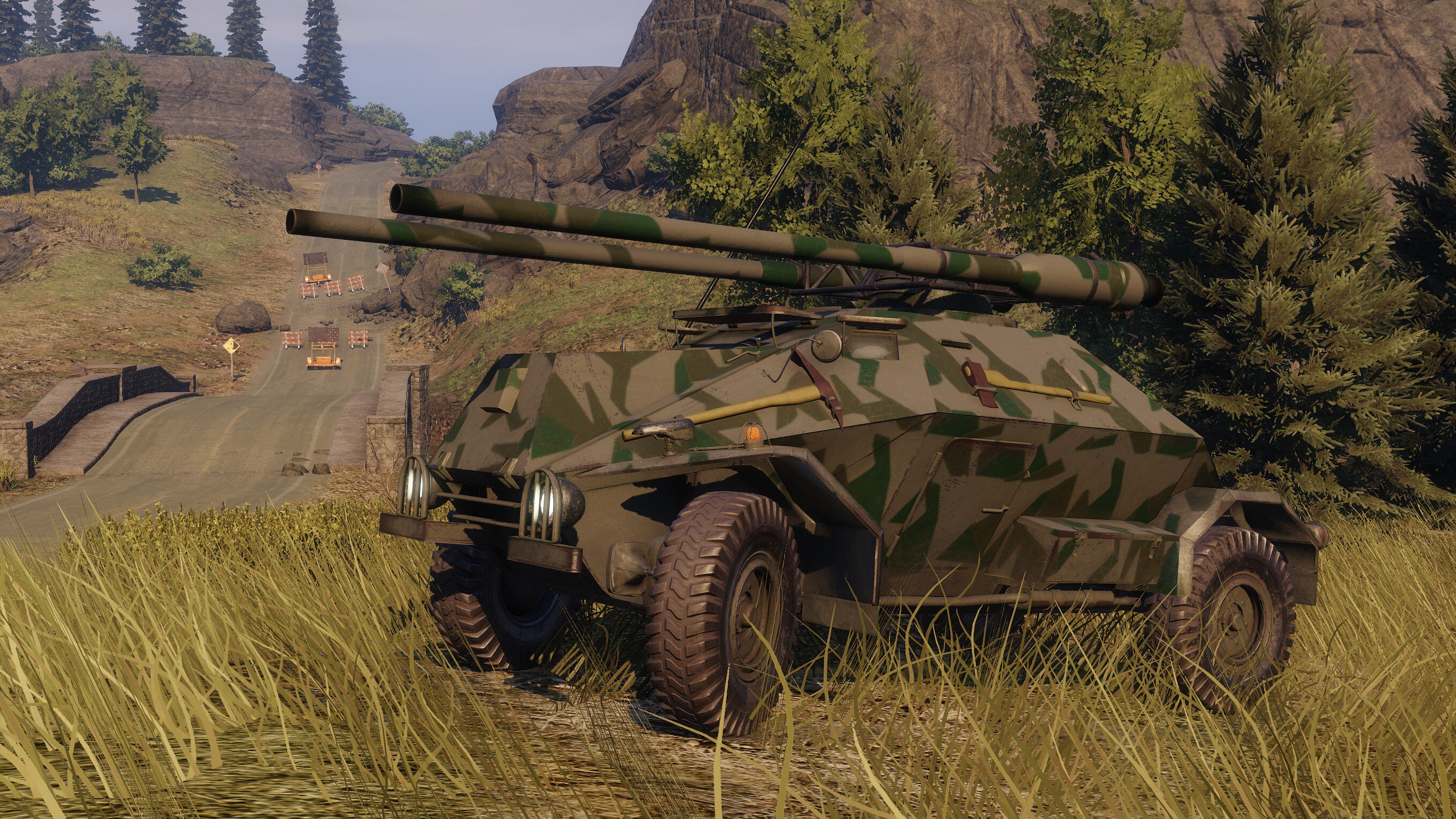
Another such shortage example was the APC situation where, apart from a few American M3 half-tracks, nothing was available with the exception of some promising wartime APC research (a fully tracked APC on Vz.38 chassis) that was, once again, discarded. Instead, the Czechoslovaks produced a modified German wartime half-track with a Tatra engine under the name of OT-810. It was generally hated by its crews and received a suitable nickname: “Hitler’s Revenge”.
The Soviets themselves learned a lot from these early situations that happened to a degree all over the eastern bloc and, instead of forcing their APCs upon the allies, allowed them to produce their own. In the case of Czechoslovakia and Poland, an agreement was reached eventually (after many delays) for a production of the OT-64 APC. The OT-64 was an excellent and modern vehicle for its time but the cooperation was a disaster. The whole story can be read in the following articles:
- Development of OT-64 SKOT – Predecessors
- Polish-Czechoslovak Armor Development Cooperation
- In Development: OT-64
By the time the project ended, the Polish were angry at the Czechoslovaks for being looked down at and the Czechoslovaks were left with a feeling that the whole “joint project” was just a thinly veiled ruse to make them fund the Polish heavy vehicle industry.
Other reasons for the Soviets allowing local equipment to be used were political ones. These cases were largely individual. The Soviet-Yugoslavian split was a very good example – Yugoslavia under Tito, while generally belonging to the eastern bloc, was a proud country that generally disliked being interfered with, which led to a major political split between 1948 and 1955. One of the results was, amongst other things, the purchase of a large number of American vehicles by the Yugoslavs. That’s where the Yugoslav Shermans and Jacksons that were still used during the 1990s civil wars came from.
Another such cases were Romania and Albania that had their own splits with the Soviets (especially later on), leading to some purchases of Chinese equipment (since the Chinese were, in their eyes, the “real” communists at that time).
And, finally, there was the Soviet unwillingness to part with their cool toys. The reasons for that were naturally both political (you don’t give out your best stuff to someone who might turn on you or hand it over to the westerners) and economical (the best stuff was never available in sufficient numbers). This sparked, especially in the 1970s and 1980s, a number of local equipment modernization programs that differed from the Soviet ones, leading to sometimes rather strange situations (there were, for example, around five different T-54M and T-55M tanks, each with its own set of upgrades). Some “bloc” upgrades such as the Czechoslovak T-55AM2 and its Bastion variant for East Germany, the T-55AM2B, were, however, highly successful and were sold to a number of foreign buyers.

It all fell apart for a time after 1989. After four decades of “glorious socialism” (characterized for the most part by poor living conditions and empty shops), the eastern bloc countries finally, for the first time, chose their own paths that led them away from Russia and towards the NATO and the European Union.
Their militaries were professionalized and most of the Soviet-era equipment was phased out or sold off, flooding the third world markets for years. The plants that produced tanks for decades closed down as their products were no longer needed. Some were privatized and became experts at maintaining and producing Russian arms upgrades such as the Polish PT-91 tanks and the Czech T-72M4CZ. Their products are also represented in Armored Warfare.
From July 3 to July 31, 2018, the following vehicles will be available for lower price than usual:
OT-65A Tier 3 AFV – This is originally a Hungarian FÚG light armored fighting vehicle, adopted in the Czechoslovak military under the name of OT-65A following the Czechoslovak failure to produce a light AFV of their own. It wasn’t exactly the best light AFV in existence but the Czechoslovaks chose it due to the fact that the Soviet BRDM was not available for capacity reasons. This variant is armed with a light recoilless launcher. You can read more about it in our dedicated article.
- Discount: 35%

OA-82 Jarmila II Tier 4 AFV – The Jarmila II actually historically preceded the OT-65A. It was a prototype AFV designed for the Czechoslovak army, or, more specifically, to meet its recon requirements. It was a good armored car with several variants available (the most notable of which was the one in the game with two 82mm recoilless guns) but there was one fatal flaw in the plan to produce it – the centrally planned economy system simply did not have the capacity to make it happen and the project was subsequently cancelled in 1959, leading to the adoption of the OT-65. You can read more about it in our dedicated article.
- Discount: 35%
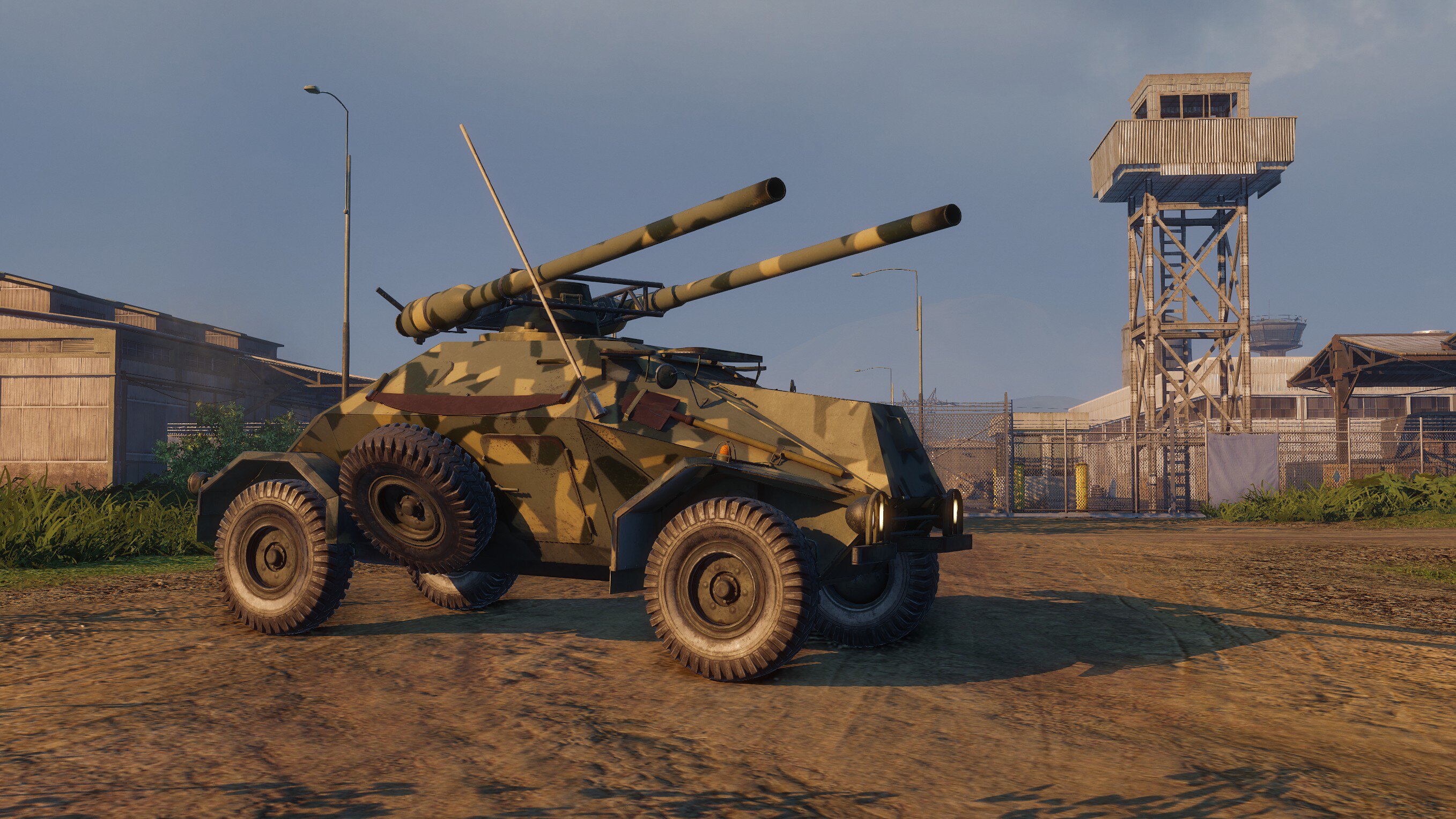
OT-64 COBRA Tier 5 AFV – This is a typical example of a post-1989 Soviet-era equipment upgrade, this time the Czechoslovak OT-64. It’s a purely Slovak upgrade by ZŤS Špeciál Trenčín. A modern COBRA turret was added to the vehicle, giving it the ability to fire guided missiles. The combination was offered commercially starting from 2001 but found no customers. You can read more about it in our dedicated article.
- Discount: 35%
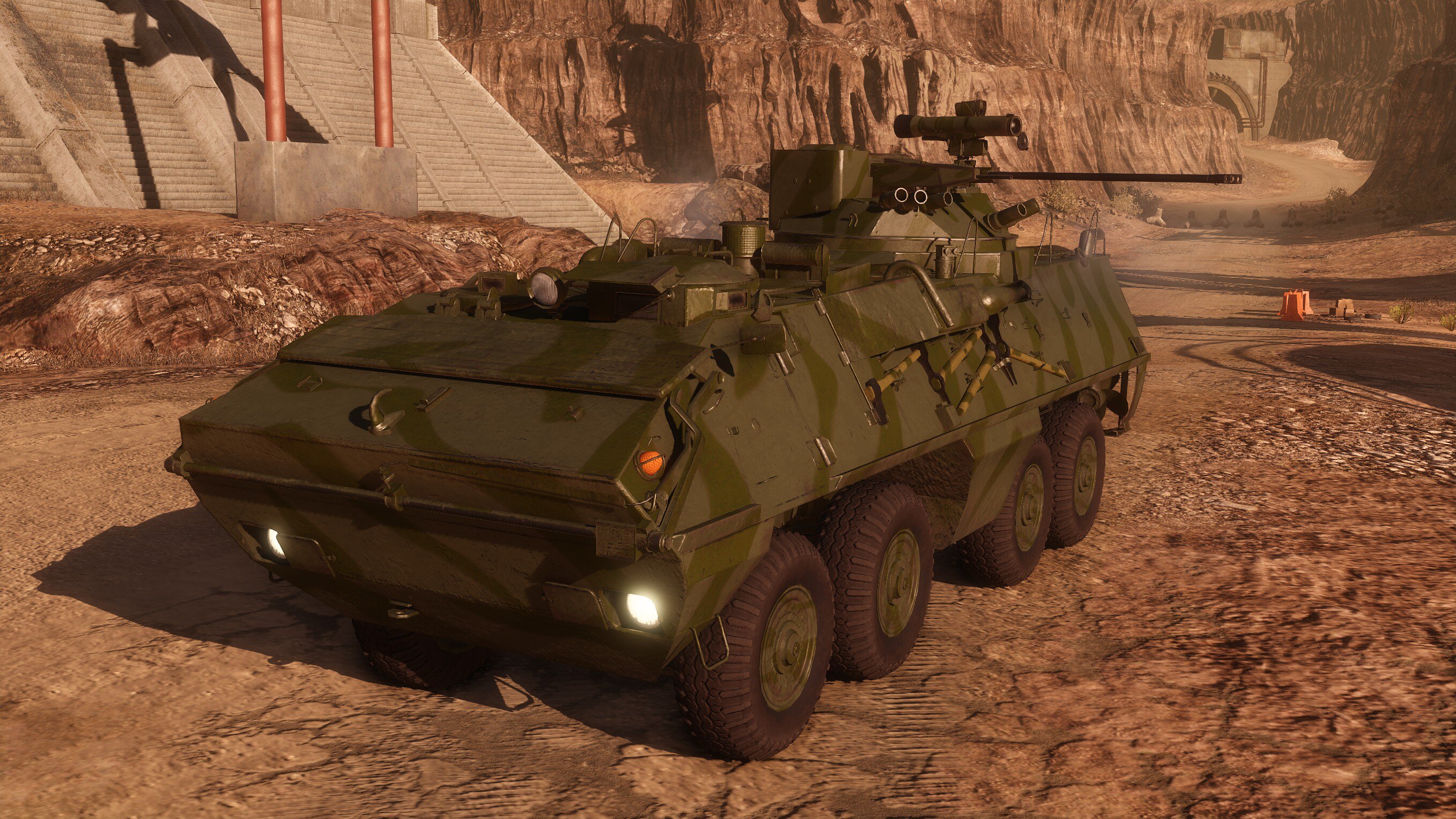
BVP Šakal Tier 6 AFV – Another example of a Soviet equipment upgrade, this time a deeper one, the Šakal (“Jackal”) was a heavily modified BMP-2 by one of the most prominent post-1989 Czech arms companies called Excalibur Army. The vehicle was completely overhauled to meet the requirements of a modern battlefield – at least on paper. In reality, it had its issues, including insufficient protection and overloading the old BMP suspension. It was shown to several potential customers but never received any orders. You can read more about it in our dedicated article.
- Discount: 35%

KTO Rosomak Tier 7 AFV – The Rosomak is the current standard wheeled IFV of the Polish military. Originally designed by Patria, it was modified and locally license-produced in Poland. It has already seen combat in Afghanistan and fared quite well. Poland plans to obtain more of these vehicles in the future. In Armored Warfare, the Rosomak is special in the way that it does not have any guided missiles and has to rely on its cannon only. You can read more about it in our dedicated article.
- Discount: 25%

ZBL-08 Tier 7 AFV – The ZBL-08 is to the Chinese military what the Rosomak is to Poland – a modern wheeled infantry fighting vehicle. It entered service only relatively recently (in 2008) and limited numbers are available. You can read more about it in our dedicated article.
- Discount: 25%
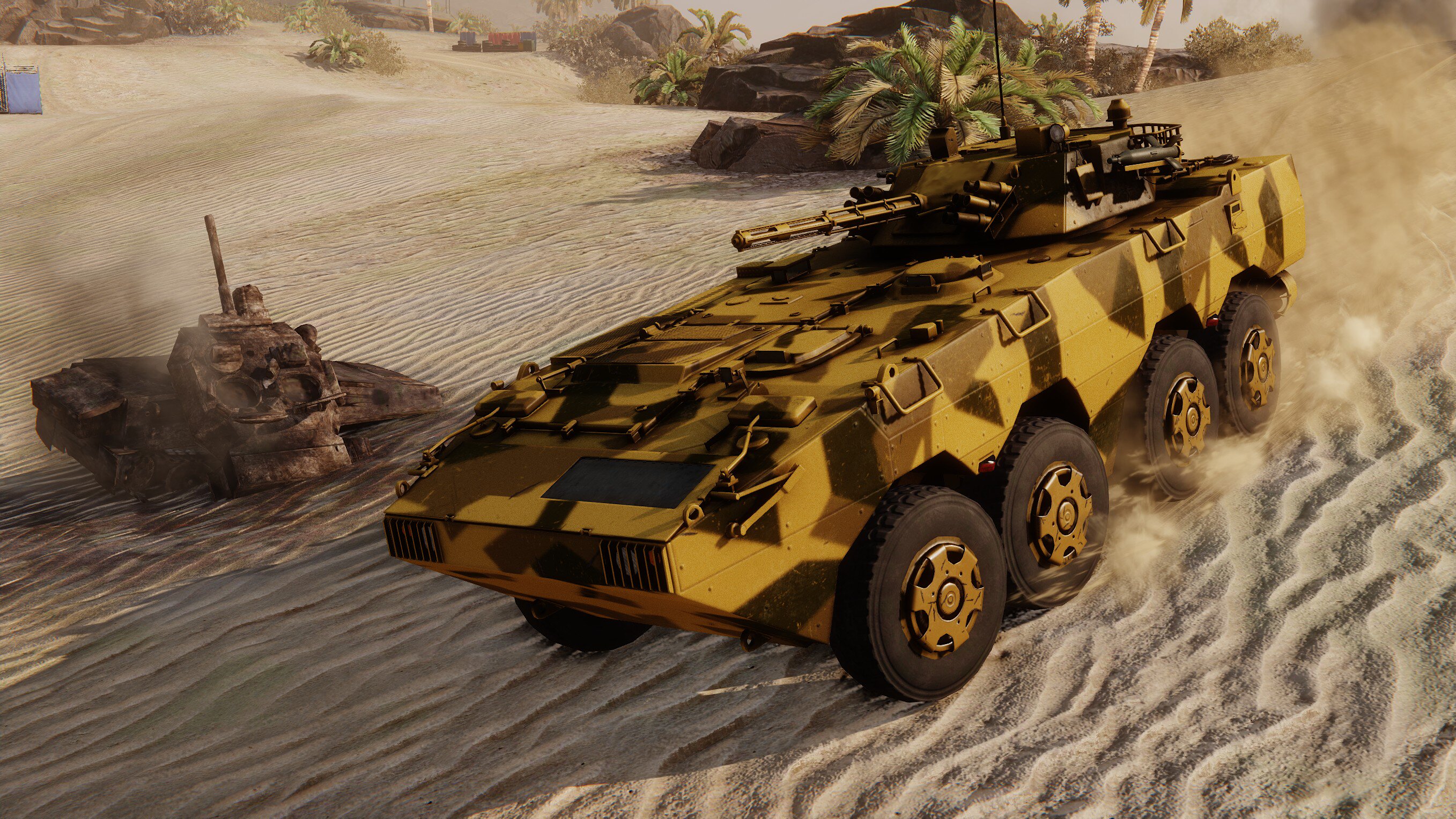
KTO Rosomak M1 Tier 8 AFV – The M1 is an upgraded Rosomak for the use in Afghanistan. It features improved protection as well as the ability to fire Spike guided missiles. You can read more about it in our dedicated article.
- Discount: 25%

ST1 Tier 8 TD – The ST1 is the second vehicle of the line’s mini-branch, following the ZBL-08 and is essentially a ZBL-08 hull with a 105mm gun turret. Not much is known about this export-oriented vehicle and it likely didn’t enter mass production. You can read more about it in our dedicated article.
- Discount: 25%

WPB Anders Tier 9 LT – Unlike the rest of the branch, the Anders is a Light Tank. Named after a Polish war hero, the Anders platform (consisting of multiple vehicles from an IFV to a Light Tank) was developed to actually replace the old Soviet-era MBTs with something modern. It first appeared in 2010 but failed to attract the attention of the Polish military and the idea to replace the MBTs with a Light Tank was subsequently cancelled. You can read more about it in our dedicated article.
- Discount: 20%

Wilk XC8 Tier 10 TD – The final vehicle of this branch is a combination of a Rosomak hull and a CMI (Cockerill) XC8 120mm gun turret, creating an extremely potent tank destroyer. Light and agile, it passed it trials with excellent results but whether it will ever see service in the Polish military remains unknown. You can read more about it in our dedicated article.
- Discount: 15%
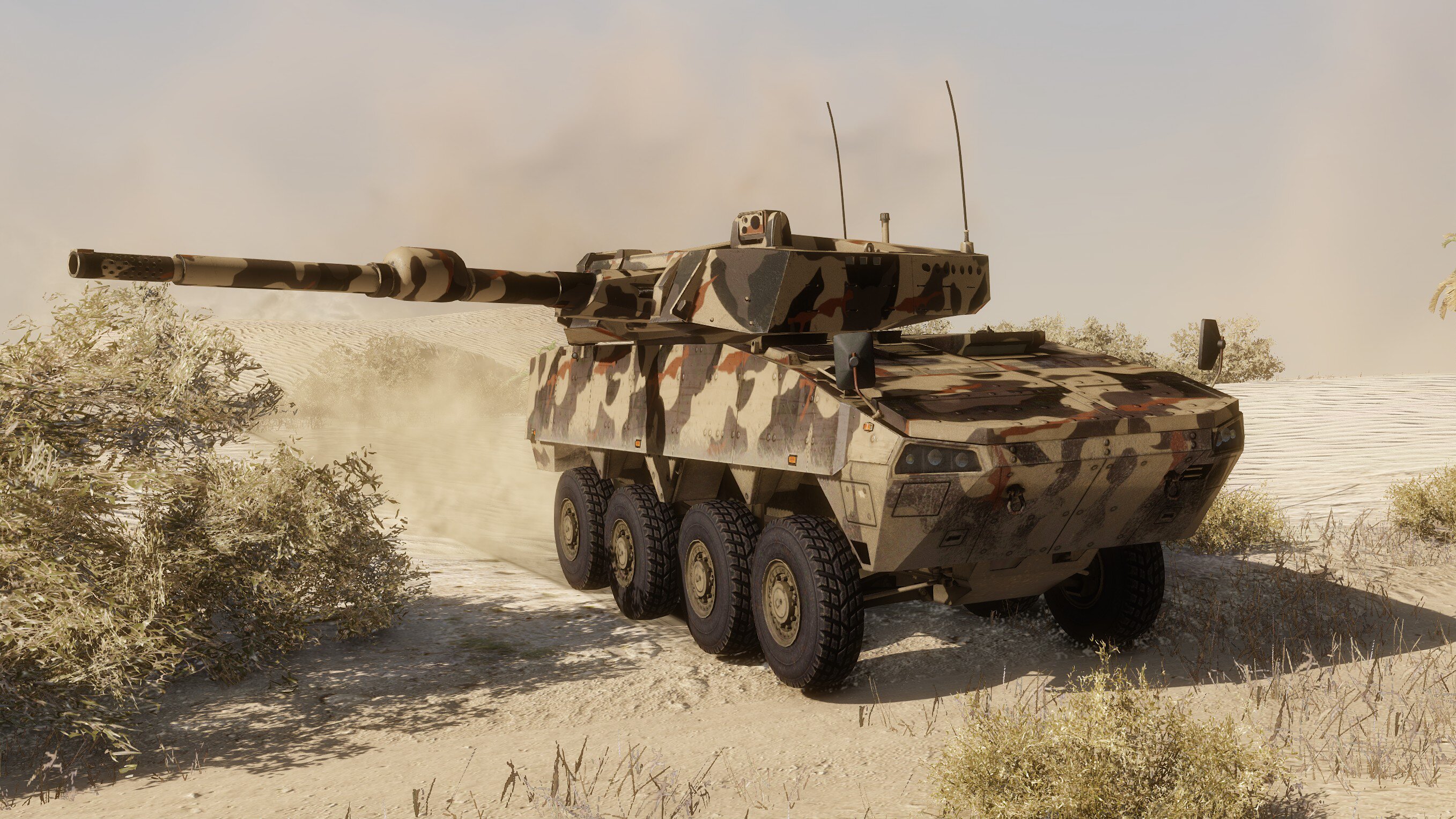
The Zhang Feng branch is a multi-class one with three different types of vehicles being having their representatives in it. From Tier 3 to Tier 8, the line consists of Armored Fighting Vehicles. You can read more about those in a dedicated article.
The Tank Destroyers can be read about in a developer diary of their own and, finally, Light Tank tactics apply to the WPB Anders.
We’ll see you on the battlefield!





